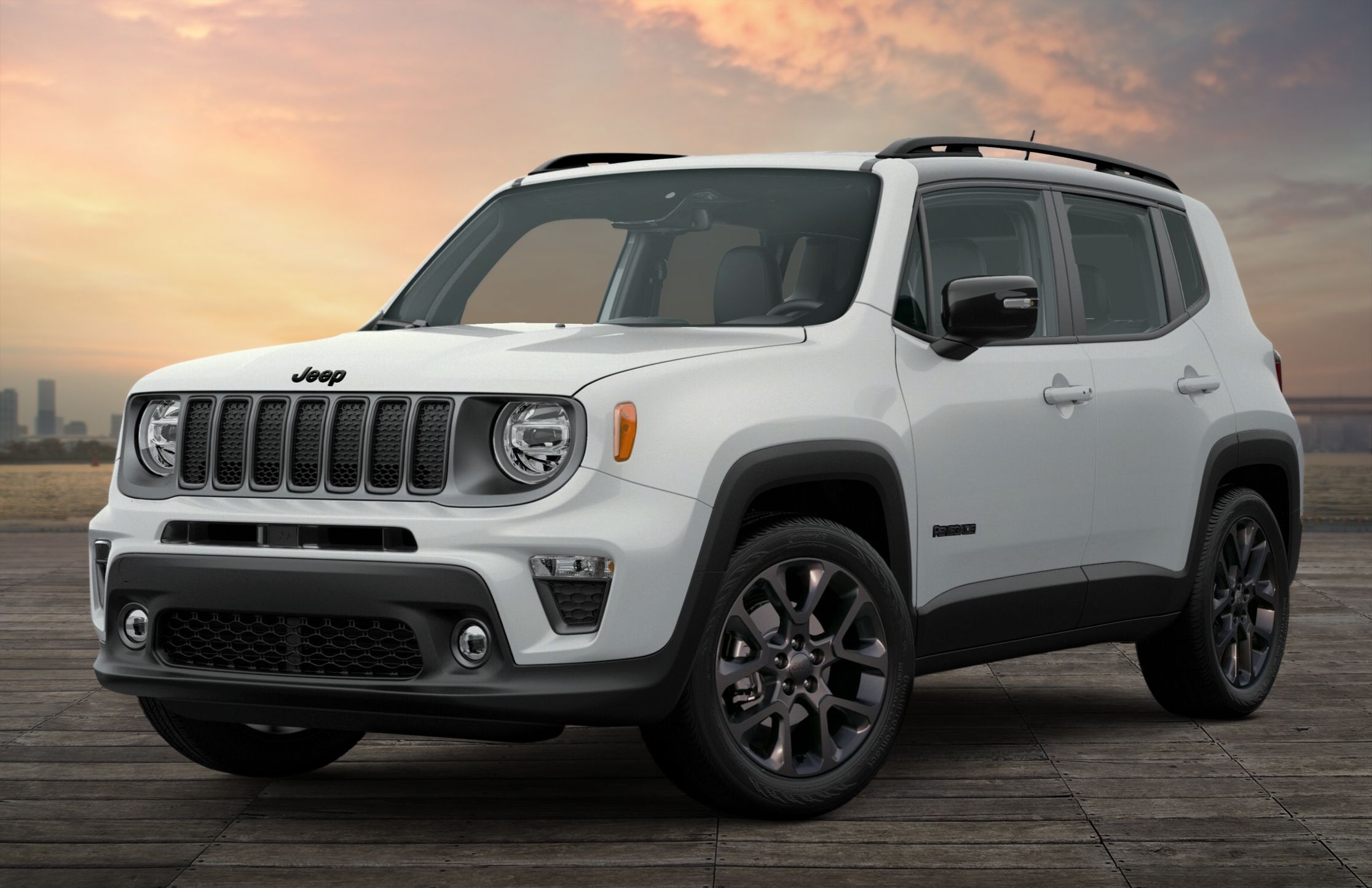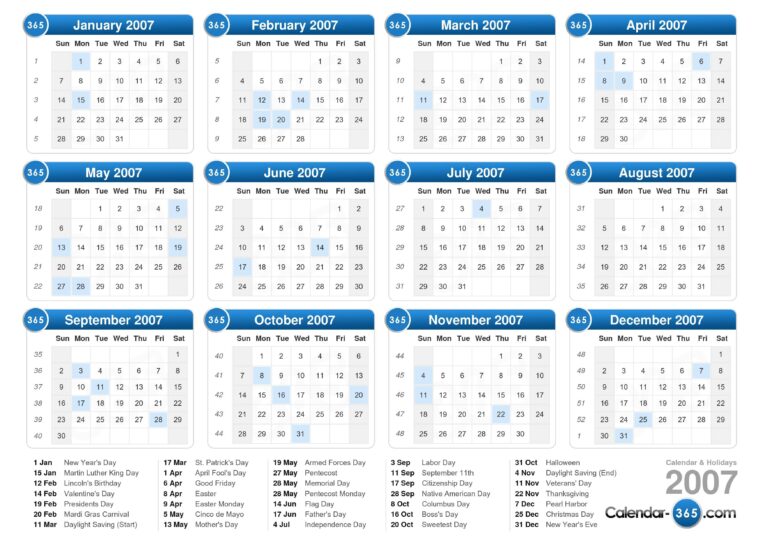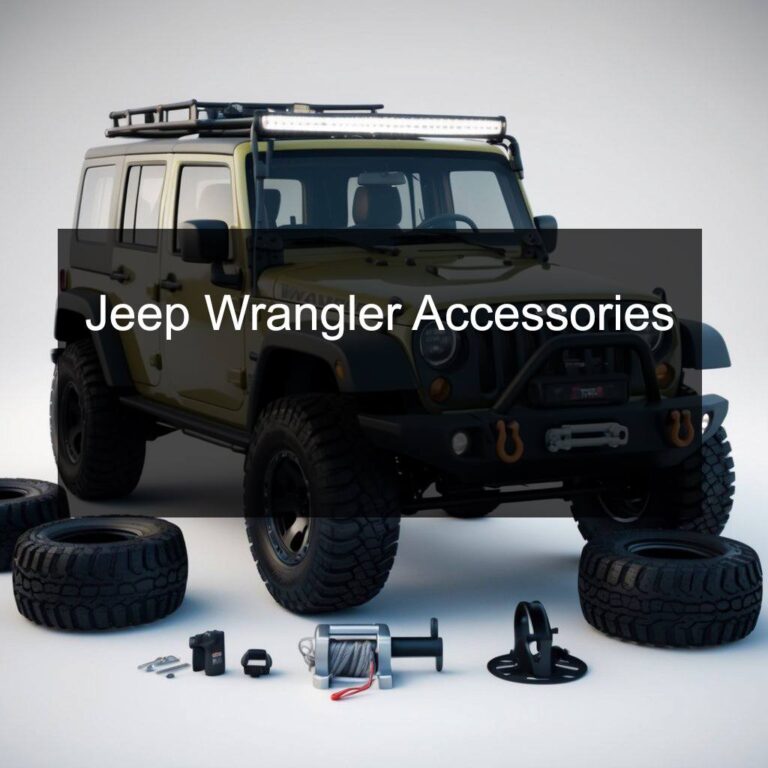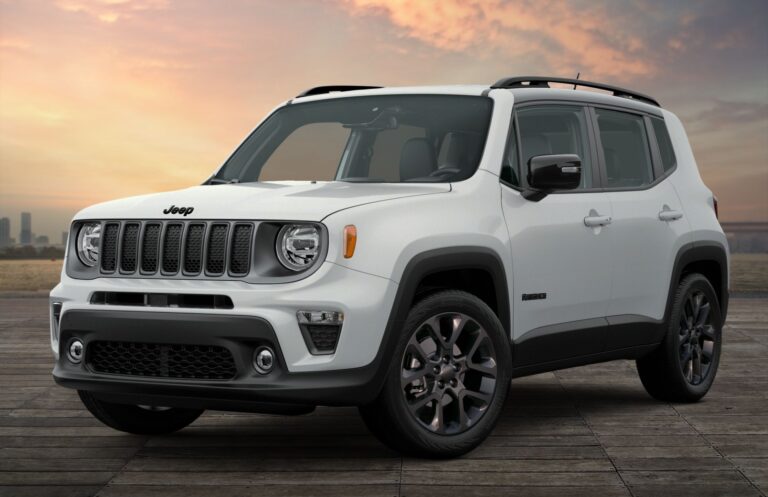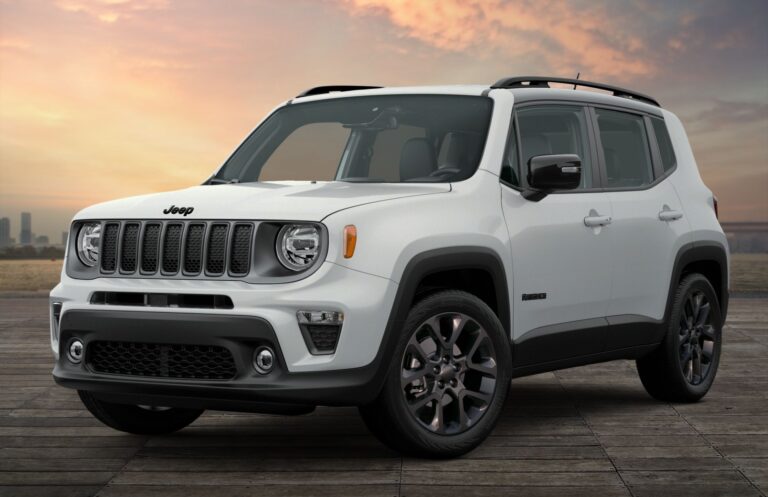Jeep Wrangler 1990 Offroad For Sale: Your Guide to Acquiring a Vintage Trail Beast
Jeep Wrangler 1990 Offroad For Sale: Your Guide to Acquiring a Vintage Trail Beast jeeps.truckstrend.com
The roar of an engine, the crunch of gravel under massive tires, the thrill of conquering rugged terrain – for many, this isn’t just a fantasy, it’s the very essence of the Jeep Wrangler experience. And among the pantheon of iconic off-roaders, the 1990 Jeep Wrangler YJ holds a special, almost mythical, place. If you’re seeing a "Jeep Wrangler 1990 Offroad For Sale" listing, you’re not just looking at a vehicle; you’re looking at a piece of American automotive history, a blank canvas for adventure, and a testament to enduring simplicity and capability.
This comprehensive guide is designed for anyone considering purchasing a 1990 Jeep Wrangler specifically set up for off-road use. We’ll delve into what makes these vehicles so sought-after, what to look for when buying, the joys and challenges of ownership, and practical advice to ensure your acquisition of this vintage trail beast is a success.
Jeep Wrangler 1990 Offroad For Sale: Your Guide to Acquiring a Vintage Trail Beast
The Enduring Appeal of the 1990 Jeep Wrangler YJ
The 1990 model year falls squarely within the YJ generation (1987-1995), a period that marked a significant evolution for the Wrangler while retaining its core identity. While some purists initially balked at the square headlights – a departure from the round eyes of its CJ predecessors – the YJ quickly proved its mettle. It brought improved on-road manners with wider leaf springs and a slightly more refined interior, yet sacrificed none of the legendary off-road prowess.
For the off-road enthusiast, the 1990 YJ offers several compelling advantages:
- Robust Simplicity: The YJ’s design is wonderfully straightforward. It features solid front and rear axles (Dana 30 front, Dana 35 or optional Dana 44 rear), leaf spring suspension all around, and minimal complex electronics. This simplicity translates to easier maintenance, greater reliability in harsh conditions, and a more direct connection to the driving experience.
- Modifiability: The YJ platform is incredibly receptive to modifications. Lift kits, larger tires, lockers, armor, winches – you name it, there’s likely an aftermarket solution. Many "Offroad For Sale" YJs will already boast a significant array of upgrades, saving you time and money on initial customization.
- Classic Status: As a vintage Jeep, the 1990 YJ carries a certain undeniable cool factor. It stands out from modern, often more complex, vehicles and connects you to a rich heritage of off-road exploration.
- Community: The Jeep community, particularly for older models, is vibrant and incredibly supportive. You’ll find a wealth of knowledge, parts, and camaraderie among fellow YJ owners.

What Makes a 1990 Wrangler "Offroad Ready"?
When a listing specifies "Jeep Wrangler 1990 Offroad For Sale," it implies that the vehicle has been prepared beyond its stock configuration for more demanding trail use. Here’s a breakdown of common modifications and what they signify:
- Lift Kits & Suspension Upgrades:
- Purpose: Increase ground clearance, allow for larger tires, and improve articulation (the ability of the suspension to flex over uneven terrain).
- What to Look For: Quality components (leaf springs, shocks, shackles), proper installation (no sagging, unevenness), and accompanying modifications like slip yoke eliminators (SYE) and CV driveshafts if the lift is significant, to prevent driveline vibrations.
- Larger Tires:

- Purpose: Enhance traction, improve ground clearance, and provide a larger contact patch for off-road surfaces.
- What to Look For: Tire size (e.g., 33-inch, 35-inch), tread pattern (mud-terrain, all-terrain), remaining tread depth, and proper wheel backspacing to prevent rubbing.
- Axle Upgrades & Lockers:
- Purpose: Increase strength and traction. Stock Dana 35 rear axles can be weak with larger tires. Lockers (limited-slip differentials or full lockers) ensure both wheels on an axle receive power simultaneously, preventing wheel spin.
- What to Look For: Confirmation of upgraded axles (e.g., Dana 44, Ford 8.8, Dana 60), specific locker types, and proper gearing (re-gearing is crucial when installing larger tires to restore power and efficiency).
- Armor & Protection:
- Purpose: Shield vital components from rocks and trail obstacles.
- What to Look For: Rock sliders (protect rocker panels), skid plates (for oil pan, transmission, transfer case, fuel tank), differential guards, and heavy-duty bumpers.
- Winch:
- Purpose: Self-recovery or assisting others when stuck.
- What to Look For: Winch capacity, type (electric or hydraulic), condition of the cable/synthetic rope, and robust mounting.
- Other Common Mods:
- Aftermarket Lighting: LED light bars, spot lights for improved visibility.
- Snorkel: For deep water crossings (though not recommended without other waterproofing).
- Roll Cage Enhancements: For increased safety.
- Recovery Gear: High-lift jacks, tow straps, shackles often included with a sale.
Key Considerations When Buying a 1990 Offroad Wrangler
Purchasing a vintage off-roader, especially one that’s been modified, requires careful inspection and due diligence.
1. The Rust Monster: Your Primary Adversary
Rust is the single biggest enemy of older Jeeps. Inspect thoroughly:
- Frame: Pay critical attention to the frame rails, especially around the control arm mounts, skid plate mounting points, and the rear cross member. Look for flaking, holes, or signs of patch-up jobs.
- Body: Check the floorboards (under the carpet), rocker panels, wheel wells, and tailgate.
- Underbody Components: Axle tubes, spring perches, shackles, and exhaust.
2. Drivetrain Health
- Engine: Listen for unusual noises (knocking, ticking, excessive valvetrain noise), check for leaks (oil, coolant), and observe exhaust smoke (blue for oil, white for coolant, black for rich fuel). The 4.2L (258 cu in) inline-six is known for reliability but can be prone to vacuum leaks and carburetor issues. The later 4.0L (242 cu in) HO engine (available from late 1991 in the YJ) is highly sought after for its power and reliability.
- Transmission: Manual transmissions (AX-5 or AX-15) should shift smoothly without grinding. Automatic transmissions (TF-999 or 32RH) should engage gears without harshness or slipping. Check fluid levels and color.
- Transfer Case: (NP231 or NP207) Test all modes (2H, 4H, 4L) to ensure smooth engagement. Listen for unusual noises.
- Axles & Driveshafts: Look for leaks at the differential covers and pinion seals. Inspect U-joints for play.
3. Quality of Modifications
- Professional vs. DIY: While many DIY jobs are excellent, some can be shoddy. Look for clean welds, proper torque on bolts, and correct routing of lines and wires.
- Compatibility: Ensure all modifications work harmoniously. For instance, large tires require appropriate gearing and stronger axles.
- Intended Use: Are the modifications suited to your intended off-road use? A rock crawler build might be overkill and uncomfortable for light trail use, and vice-versa.
4. Documentation and History
- Maintenance Records: Essential for understanding the vehicle’s past care.
- Modification Receipts: Confirm the quality and origin of aftermarket parts.
- Accident History: A clean title is crucial.
5. The Test Drive
- On-Road: Pay attention to steering (wander, play), braking (pulling, sponginess), vibrations (especially at highway speeds), and engine/transmission performance. Modified Jeeps often handle differently than stock, but excessive sloppiness indicates issues.
- Off-Road (if possible): If the seller permits, a light off-road test can reveal binding, rubbing, or suspension issues under articulation.
The Benefits and Challenges of Owning a Vintage Off-Roader
Benefits:
- Raw Driving Experience: Unfiltered, visceral, and incredibly engaging.
- Simplicity & Repairability: Fewer electronics mean less to go wrong and easier diagnosis/repair for the DIY enthusiast.
- Affordability (Initial): Often a lower barrier to entry than a new, similarly capable off-road vehicle.
- Customization: A blank slate for personalization.
- Community & Heritage: Be part of a passionate group of owners.
Challenges:
- Age-Related Wear: Parts wear out, rubber components perish, and rust can be a persistent battle.
- Comfort & Refinement: Lacks modern amenities like plush interiors, quiet cabins, or advanced safety features.
- Fuel Economy: Generally poor, especially with larger tires and lower gearing.
- Parts Availability: While many parts are still available, some specific YJ components may be harder to source new, requiring salvage or aftermarket alternatives.
- Maintenance Commitment: Requires more frequent attention than a modern vehicle.
Tips for a Successful Purchase
- Set a Budget: Beyond the purchase price, factor in potential repairs, registration, insurance, and immediate upgrades.
- Pre-Purchase Inspection (PPI): If you’re not a seasoned mechanic, pay a trusted independent Jeep specialist to inspect the vehicle. It’s money well spent.
- Research Market Value: Use online resources (e.g., Craigslist, Facebook Marketplace, dedicated forums, Bring a Trailer, eBay Motors) to gauge fair prices for 1990 YJs in varying conditions and modification levels.
- Ask Questions: Don’t hesitate to ask the seller about the vehicle’s history, maintenance, reasons for selling, and specific details about modifications.
- Negotiate: Be prepared to negotiate, especially if you find issues during inspection.
- Verify Title and Registration: Ensure the title is clear and matches the VIN on the vehicle.
Pricing Guide: 1990 Jeep Wrangler YJ Offroad For Sale
The price of a 1990 Jeep Wrangler YJ, particularly one set up for off-road, can vary significantly based on its condition, mileage, the quality and extent of modifications, and geographical location. The table below provides a general range.
| Condition/Modification Level | Estimated Price Range (USD) | Typical Mileage | Key Characteristics |
| :————————— | :————————– | :—————- | :——————————————————————————————————————————————————————————————————————————————————————————————————————————————————————————————————————————————————————————————————————————————————————————————————————————————————————————————————————————————————————————————————————————————————————————————————————————————————————————————————————————————————————————————————————————————————————————————————————————————————————————————————————————————————————————————————————————————————————————————————————————————————————————————————————————————————————————————————————————————————————————————————————————————————————————————————————————————————————————————————————————————————————————————————————————————————————————————————————————————————————————————————————————————————————————————————————————————————————————————————————————————————————————————————————————————————————————————————————————————————————————————————————————————————————————————————————————————————————————————————————————————————————————————————————————————————————————————————————————————————————————————————————————————————————————————————————————————————————————————————————————————————————————————————————————————————————————————————————————————————————————————————————————————————————————————————————————————————————————————————————————————————————————————————————————————————————————————————————————————————————————————————————————————————————————————————————————————————————————————————————————————————————————————————————————————————————————————————————————————————————————————————————————————————————————————————————————————————————————————————————————————————————————————————————————————————————————————————————————————————————————————————————————————————————————————————————————————————————————————————————————————————————————————————————————————————————————————————————————————————————————————————————————————————————————————————————————————————————————————————————————————————————————————————————————————————————————————————————————————————————————————————————————————————————————————————————————————————————————————————————————————————————————————————————————————————————————————————————————————————————————————————————————————————————————————————————————————————————————————————————————————————————————————————————————————————————————————————————————————————————————————————————————————————————————————————————————————————————————————————————————————————————————————————————————————————————————————————————————————————————————————————————————————————————————————————————————————————————————————————————————————————————————————————————————————————————————————————————————————————————————————————————————————————————————————————————————————————————————————————————————————————————————————————————————————————————————————————————————————————————————————————————————————————————————————————————————————————————————————————————————————————————————————————————————————————————————————————————————————————————————————————————————————————————————————————————————————————————————————————————————————————————————————————————————————————————————————————————————————————————————————————————————————————————————————————————————————————————————————————————————————————————————————————————————————————————————————————————————————————————————————————————————————————————————————————————————————————————————————————————————————————————————————————————————————————————————————————————————————————————————————————————————————————————————————————————————————————————————————————————————————————————————————————————————————————————————————————————————————————————————————————————————————————————————————————————————————————————————————————————————————————————————————————————————————————————————————————————————————————————————————————————————————————————————————————————————————————————————————————————————————————————————————————————————————————————————————————————————————————————————————————————————————————————————————————————————————————————————————————————————————————————————————————————————————————————————————————————————————————————————————————————————————————————————————————————————————————————————————————————————————————————————————————————————————————————————————————————————————————————————————————————————————————————————————————————————————————————————————————————————————————————————————————————————————————————————————————————————————————————————————————————————————————————————————————————————————————————————————————————————————————————————————————————————————————————————————————————————————————————————————————————————————————————————————————————————————————————————————————————————————————————————————————————————————————————————————————————————————————————————————————————————————————————————————————————————————————————————————————————————————————————————————————————————————————————————————————————————————————————————————————————————————————————————————————————————————————————————————————————————————————————————————————————————————————————————————————————————————————————————————————————————————————————————————————————————————————————————————————————————————————————————————————————————————————————————————————————————————————————————————————————————————————————————————————————————————————————————————————————————————————————————————————————————————————————————————————————————————————————————————————————————————————————————————————————————————————————————————————————————————————————————————————————————————————————————————————————————————————————————————————————————————————————————————————————————————————————————————————————————————————————————————————————————————————————————————————————————————————————————————————————————————————————————————————————————————————————————————————————————————————————————————————————————————————————————————————————————————————————————————————————————————————————————————————————————————————————————————————————————————————————————————————————————————————————————————————————————————————————————————————————————————————————————————————————————————————————————————————————————————————————————————————————————————————————————————————————————————————————————————————————————————————————————————————————————————————————————————————————————————————————————————————————————————————————————————————————————————————————————————————————————————————————————————————————————————————————————————————————————————————————————————————————————————————————————————————————————————————————————————————————————————————————————————————————————————————————————————————————————————————————————————————————————————————————————————————————————————————————————————————————————————————————————————————————————————————————————————————————————————————————————————————————————————————————————————————————————————————————————————————————————————————————————————————————————————————————————————————————————————————————————————————————————————————————————————————————————————————————————————————————————————————————————————————————————————————————————————————————————————————————————————————————————————————————————————————————————————————————————————————————————————————————————————————————————————————————————————————————————————————————————————————————————————————————————————————————————————————————————————————————————————————————————————————————————————————————————————————————————————————————————————————————————————————————————————————————————————————————————————————————————————————————————————————————————————————————————————————————————————————————————————————————————————————————————————————————————————————————————————————————————————————————————————————————————————————————————————————————————————————————————————————————————————————————————————————————————————————————————————————————————————————————————————————————————————————————————————————————————————————————————————————————————————————————————————————————————————————————————————————————————————————————————————————————————————————————————————————————————————————————————————————————————————————————————————————————————————————————————————————————————————————————————————————————————————————————————————————————————————————————————————————————————————————————————————————————————————————————————————————————————————————————————————————————————————————————————————————————————————————————————————————————————————————————————————————————————————————————————————————————————————————————————————————————————————————————————————————————————————————————————————————————————————————————————————————————————————————————————————————————————————————————————————————————————————————————————————————————————————————————————————————————————————————————————————————————————————————————————————————————————————————————————————————————————————————————————————————————————————————————————————————————————————————————————————————————————————————————————————————————————————————————————————————————————————————————————————————————————————————————————————————————————————————————————————————————————————————————————————————————————————————————————————————————————————————————————————————————————————————————————————————————————————————————————————————————————————————————————————————————————————————————————————————————————————————————————————————————————————————————————————————————————————————————————————————————————————————————————————————————————————————————————————————————————————————————————————————————————————————————————————————————————————————————————————————————————————————————————————————————————————————————————————————————————————————————————————————————————————————————————————————————————————————————————————————————————————————————————————————————————————————————————————————————————————————————————————————————————————————————————————————————————————————————————————————————————————————————————————————————————————————————————————————————————————————————————————————————————————————————————————————————————————————————————————————————————————————————————————————————————————————————————————————————————————————————————————————————————————————————————————————————————————————————————————————————————————————————————————————————————————————————————————————————————————————————————————————————————————————————————————————————————————————————————————————————————————————————————————————————————————————————————————————————————————————————————————————————————————————————————————————————————————————————————————————————————————————————————————————————————————————————————————————————————————————————————————————————————————————————————————————————————————————————————————————————————————————————————————————————————————————————————————————————————————————————————————————————————————————————————————————————————————————————————————————————————————————————————————————————————————————————————————————————————————————————————————————————————————————————————————————————————————————————————————————————————————————————————————————————————————————————————————————————————————————————————————————————————————————————————————————————————————————————————————————————————————————————————————————————————————————————————————————————————————————————————————————————————————————————————————————————————————————————————————————————————————————————————————————————————————————————————————————————————————————————————————————————————————————————————————————————————————————————————————————————————————————————————————————————————————————————————————————————————————————————————————————————————————————————————————————————————————————————————————————————————————————————————————————————————————————————————————————————————————————————————————————————————————————————————————————————————————————————————————————————————————————————————————————————————————————————————————————————————————————————————————————————————————————————————————————————————————————————————————————————————————————————————————————————————————————————————————————————————————————————————————————————————————————————————————————————————————————————————————————————————————————————————————————————————————————————————————————————————————————————————————————————————————————————————————————————————————————————————————————————————————————————————————————————————————————————————————————————————————————————————————————————————————————————————————————————————————————————————————————————————————————————————————————————————————————————————————————————————————————————————————————————————————————————————————————————————————————————————————————————————————————————————————————————————————————————————————————————————————————————————————————————————————————————————————————————————————————————————————————————————————————————————————————————————————————————————————————————————————————————————————————————————————————————————————————————————————————————————————————————————————————————————————————————————————————————————————————————————————————————————————————————————————————————————————————————————————————————————————————————————————————————————————————————————————————————————————————————————————————————————————————————————————————————————————————————————————————————————————————————————————————————————————————————————————————————————————————————————————————————————————————————————————————————————————————————————————————————————————————————————————————————————————————————————————————————————————————————————————————————————————————————————————————————————————————————————————————————————————————————————————————————————————————————————————————————————————————————————————————————————————————————————————————————————————————————————————————————————————————————————————————————————————————————————————————————————————————————————————————————————————————————————————————————————————————————————————————————————————————————————————————————————————————————————————————————————————————————————————————————————————————————————————————————————————————————————————————————————————————————————————————————————————————————————————————————————————————————————————————————————————————————————————————————————————————————————————————————————————————————————————————————————————————————————————————————————————————————————————————————————————————————————————————————————————————————————————————————————————————————————————————————————————————————————————————————————————————————————————————————————————————————————————————————————————————————————————————————————————————————————————————————————————————————————————————————————————————————————————————————————————————————————————————————————————————————————————————————————————————————————————————————————————————————————————————————————————————————————————————————————————————————————————————————————————————————————————————————————————————————————————————————————————————————————————————————————————————————————————————————————————————————————————————————————————————————————————————————————————————————————————————————————————————————————————————————————————————————————————————————————————————————————————————————————————————————————————————————————————————————————————————————————————————————————————————————————————————————————————————————————————————————————————————————————————————————————————————————————————————————————————————————————————————————————————————————————————————————————————————————————————————————————————————————————————————————————————————————————————————————————————————————————————————————————————————————————————————————————————————————————————————————————————————————————————————————————————————————————————————————————–Introduction
The allure of a vintage Jeep Wrangler, especially one primed for off-road dominance, is undeniable. Among the iconic models, the 1990 Jeep Wrangler YJ holds a special place, representing a blend of classic ruggedness and a touch of modernized comfort compared to its CJ predecessors. When you encounter a listing for a "Jeep Wrangler 1990 Offroad For Sale," you’re not just looking at a vehicle; you’re eyeing a potential companion for adventure, a canvas for further customization, and a ticket into a passionate community of off-road enthusiasts. This article serves as a comprehensive guide for anyone considering such a purchase, delving into the unique characteristics of the 1990 YJ, what constitutes "off-road readiness," critical inspection points, the pros and cons of vintage ownership, and practical advice to ensure a smart acquisition.
The Enduring Legacy of the 1990 Jeep Wrangler YJ
The YJ generation (1987-1995) marked a pivotal moment in Jeep’s history, succeeding the beloved CJ series. While initially controversial for its square headlights, the YJ quickly proved its mettle, offering a slightly wider stance and improved on-road handling due to its leaf spring suspension being wider set than the CJ’s. Crucially, it retained the robust, body-on-frame construction and solid axles (Dana 30 front, Dana 35 or optional Dana 44 rear) that are the bedrock of Jeep’s legendary off-road capability.
The 1990 model year, in particular, benefits from being a mid-production YJ, meaning many of the initial kinks had been worked out, and it still largely predates the more complex electronics found in later models. This simplicity is a major draw for off-roaders:
- Mechanical Simplicity: Less reliance on intricate computer systems means easier diagnosis and repair for the DIY enthusiast, and fewer potential points of failure in challenging environments.
- Rugged Drivetrain: The 4.2L (258 cu in) inline-six engine (standard for 1990) is renowned for its low-end torque and bulletproof reliability, perfect for crawling over obstacles. While carburetor-fed, which can be finicky, many have been converted to aftermarket fuel injection for improved performance and reliability.
- Unmatched Modifiability: The YJ platform is one of the most supported in the aftermarket world. Virtually any off-road upgrade imaginable is available, making it incredibly easy to tailor the vehicle to specific trail demands.
- Classic Aesthetics: Despite the square headlights, the YJ’s silhouette is unmistakably Jeep, exuding a timeless, no-nonsense charm that stands out from more modern, often softer, SUVs.
Decoding "Offroad For Sale": What Defines a Trail-Ready YJ?
When a 1990 Jeep Wrangler is advertised as "Offroad For Sale," it implies a significant departure from its factory specifications. This usually means it has undergone modifications to enhance its performance, durability, and capability on challenging terrain. Understanding these common modifications is crucial for evaluating the vehicle’s true potential and value.
Common Off-Road Enhancements:
- Lift Kits & Suspension Systems:
- Purpose: To increase ground clearance for larger obstacles and accommodate bigger tires, while also improving suspension articulation (the ability of wheels to move independently over uneven terrain).
- What to Look For: The type of lift (spring-over-axle conversions, shackle lifts, or full spring replacements), quality of shocks (e.g., Fox, Bilstein, Rancho), and whether other components like extended brake lines, longer control arms, or a slip yoke eliminator (SYE) kit with a CV driveshaft have been installed to correct driveline angles.
- Larger Tires & Wheels:
- Purpose: Enhanced traction, improved ground clearance, and better flotation on soft surfaces like sand or snow.
- What to Look For: Tire size (e.g., 33-inch, 35-inch, 37-inch), tread pattern (Mud-Terrain for aggressive off-roading, All-Terrain for mixed use), brand, and remaining tread depth. Also, inspect the wheels for damage and ensure proper backspacing to prevent rubbing.
- Axle Upgrades & Lockers:
- Purpose: To strengthen the drivetrain for the stresses of larger tires and demanding terrain, and to maximize traction.
- What to Look For: Many YJs will have upgraded from the weaker stock Dana 35 rear axle to a Dana 44 or a Ford 8.8. Aftermarket lockers (selectable, automatic, or limited-slip differentials) are critical for ensuring power goes to the wheels with traction. Proper re-gearing (matching differential gears to tire size) is essential for restoring power and efficiency after larger tires are installed.
- Protective Armor & Recovery Gear:
- Purpose: To safeguard vulnerable components from impacts and provide means for self-recovery.
- What to Look For: Heavy-duty front and rear bumpers (often with D-ring mounts), rock sliders (to protect rocker panels), skid plates (for the oil pan, transmission, transfer case, and fuel tank), and differential guards. A winch (electric or hydraulic) is a must-have for serious off-roading, along with associated recovery gear like tow straps and shackles.
- Performance & Utility Upgrades:
- Purpose: To enhance engine performance, electrical systems, and overall utility.
- What to Look For: Aftermarket carburetors or fuel injection conversions, upgraded ignition systems, high-output alternators, auxiliary lighting (LED light bars, rock lights), upgraded roll cages, and perhaps an onboard air compressor.
Essential Considerations When Buying a 1990 Offroad Wrangler
Purchasing a modified vintage vehicle requires a keen eye and thorough inspection. Don’t let the excitement of off-road potential blind you to underlying issues.
1. The Rust Inspection: Paramount Importance
Rust is the primary enemy of older Jeeps, especially those that have seen trail use or live in corrosive climates.
- Frame: Critically inspect the entire frame, paying extra attention to the areas around the leaf spring perches, control arm mounts, skid plate attachment points, and the rear cross member. Look for flaking, significant pitting, or amateurish patch jobs.
- Body: Check the floorboards (especially under the carpet and near drain plugs), rocker panels, wheel wells, and the tailgate.
- Underbody Components: Examine spring shackles, brake lines, fuel lines, and exhaust components for severe corrosion.
2. Drivetrain & Mechanical Health
- Engine: Listen for unusual noises (knocks, ticks, excessive valvetrain noise). Check for oil leaks (common around valve covers, oil pan, and rear main seal) and coolant leaks. Observe exhaust smoke for color (blue indicates oil burning, white suggests coolant, black means rich fuel mixture).
- Transmission: For manual transmissions (AX-5 or AX-15), ensure smooth shifts without grinding. For automatics (TF-999 or 32RH), check for harsh shifts, slipping, or delayed engagement. Check fluid levels and condition.
- **Transfer Case (

